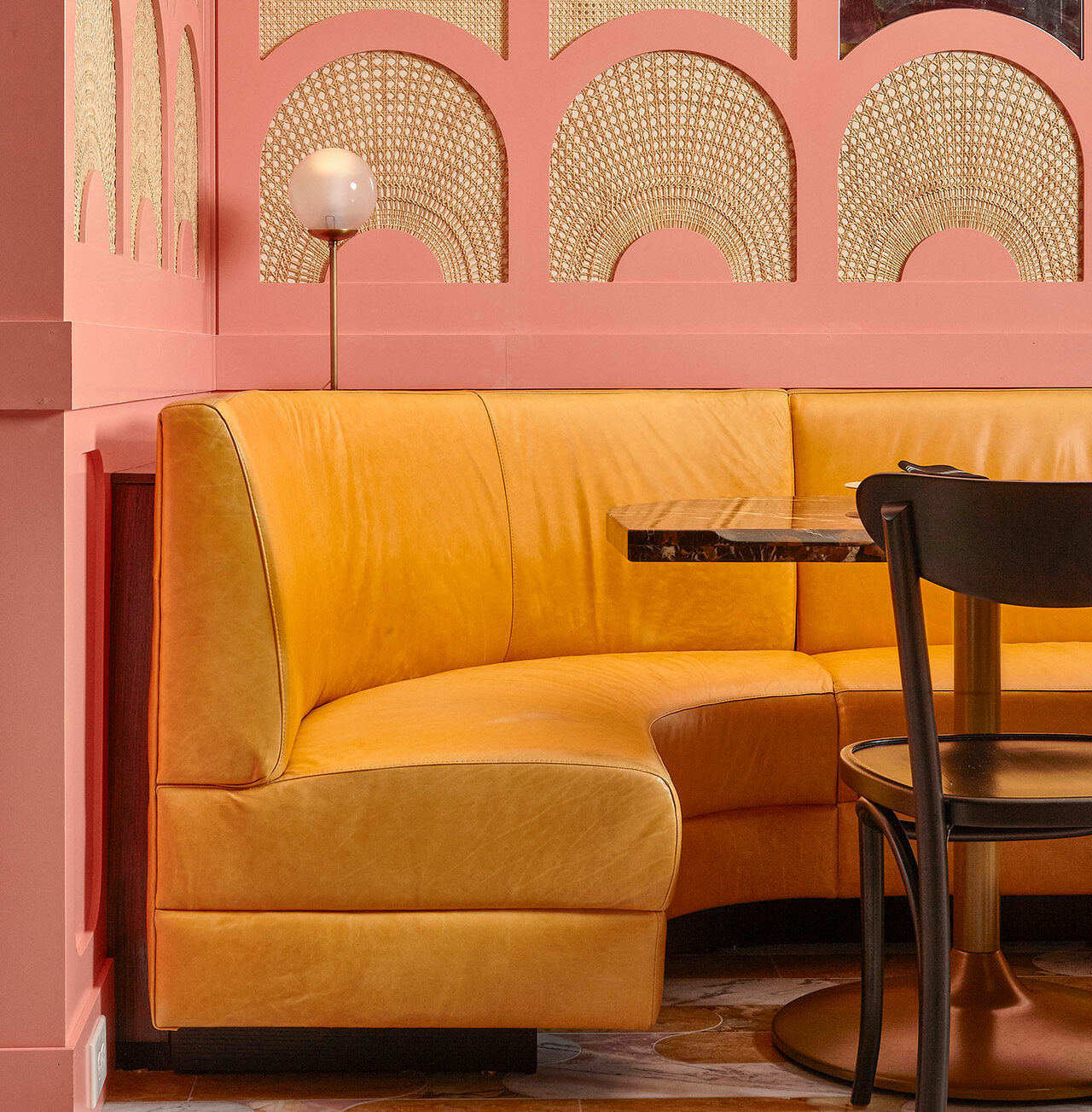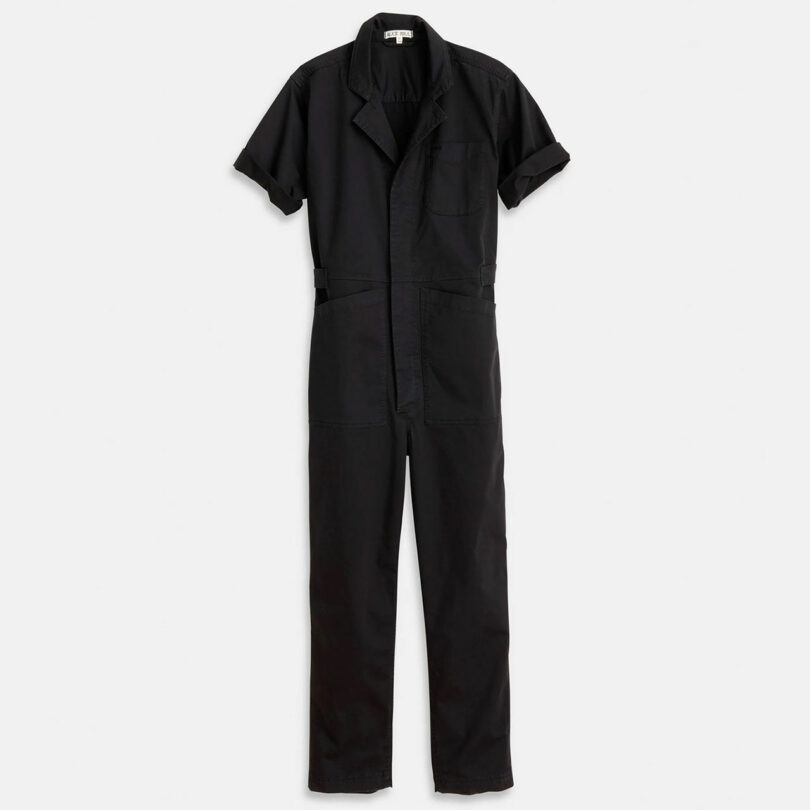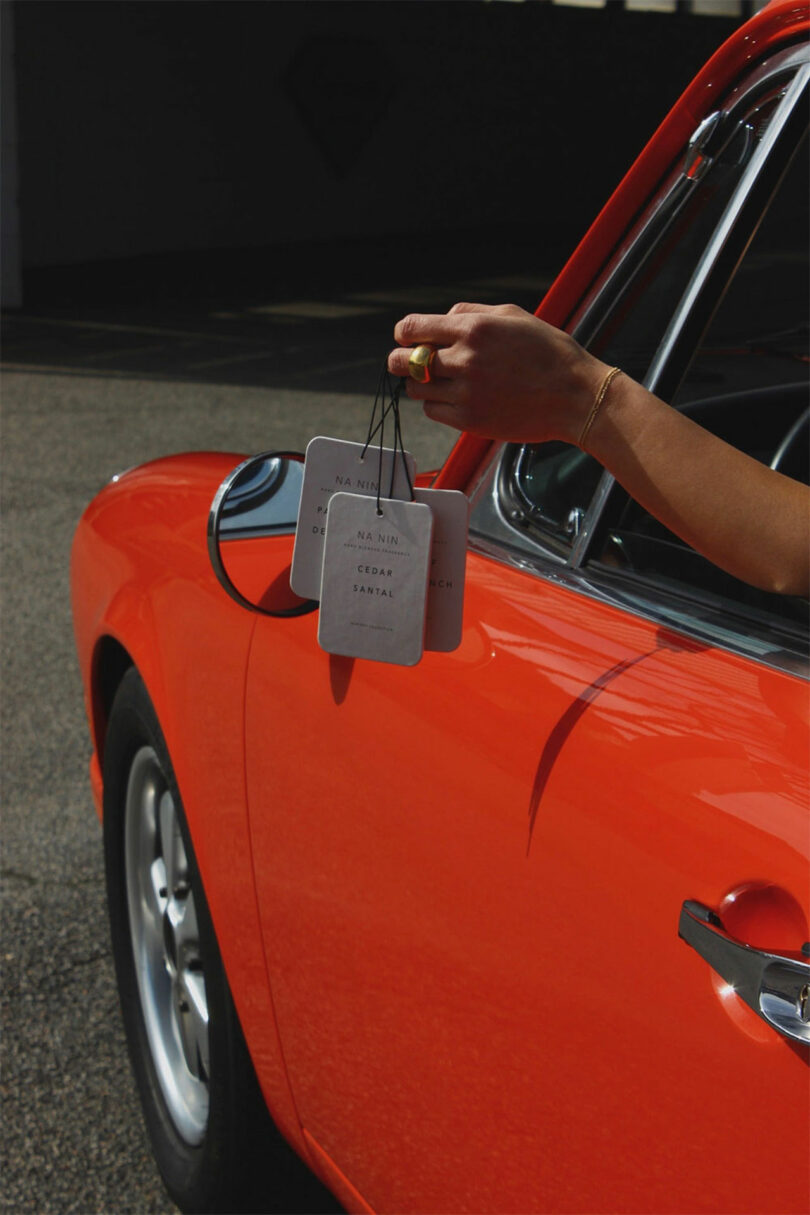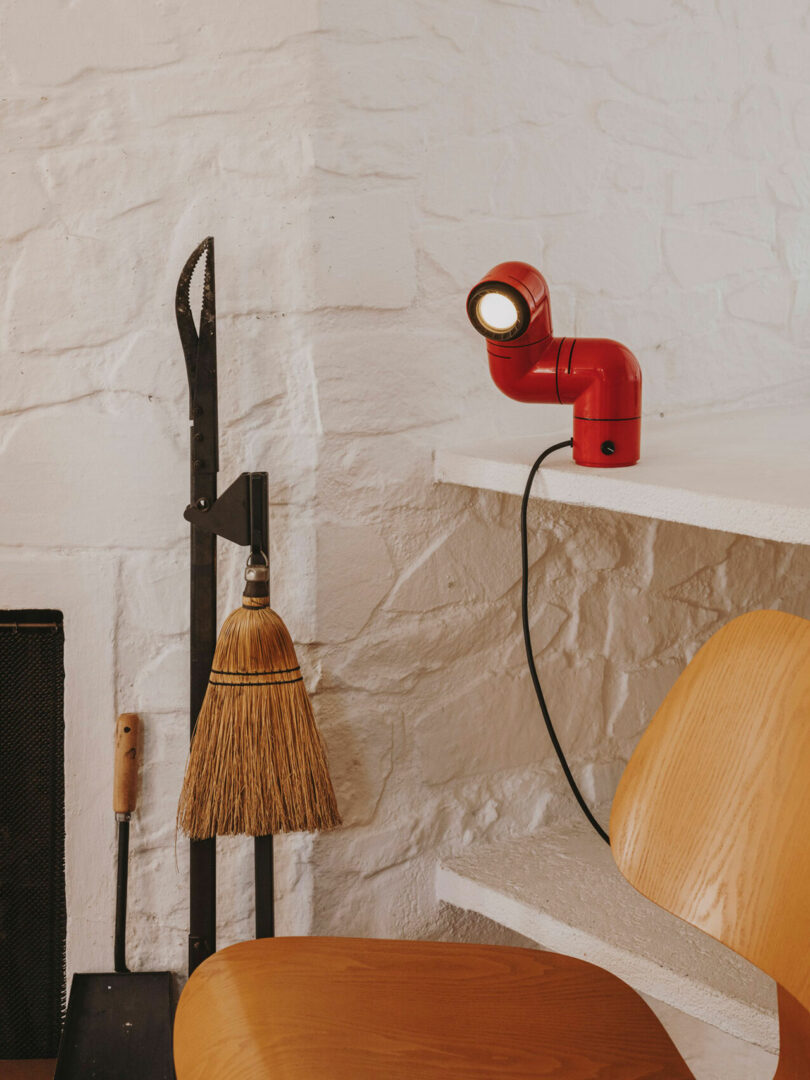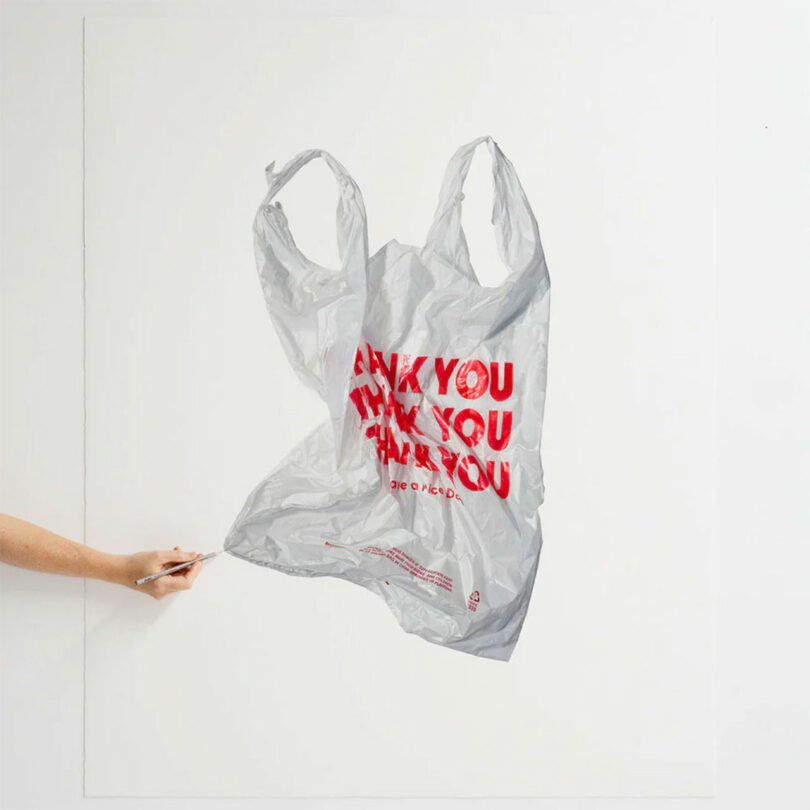While studying interior design in college, Kate Rohrer waited tables and poured cocktails at Stephen Starr’s flagship eatery in Philadelphia, The Continental. Not only did Rohrer earn a paycheck, she experienced the impact of design firsthand. This real-life case study still continues to inform many of her hospitality projects today.
Even though Rohrer always wanted to be a designer, the path to get there was hardly a smooth one. By the time she founded her firm ROHE Creative in 2014, she already had her share of sleepless nights and major leaps of faith. “I would say the moment it all became real was when I took on my first restaurant project,” Rohrer says. “I had a newborn at home, no real team behind me, and no studio. Just my living room floor with material skewed about.”
Kate Rohrer Photo: Inna Spivakova
Those early struggles were equal parts exhilarating and terrifying for the designer, who now takes a holistic approach to every aspect of her work, from construction challenges to budgets and schedules. Rohrer also never ties herself to a single period, but instead seamlessly blends disparate styles to create strong narratives. By being open to unique sourcing and styling elements, the more impactful the moments in each of Rohrer’s spaces.
When the ever-busy Rohrer does have some spare time, she’s tackling renovations or scouring antique stores for the perfect find. She’s also scribbling or doodling everywhere she goes. Rohrer will write on old bills, napkins, and cardboard boxes, eager to capture bits of inspiration.
The ups and downs of design are equal parts exhilarating and terrifying, but Rohrer wouldn’t have it any other way. “It was and still is what keeps me coming back for more every single time,” she notes. “It’s not just about the final result or the pretty picture for me, but the creative process and collaborating with equally passionate people.”
Today, Kate Rohrer joins us for Friday Five!
I have two kids, six employees, simultaneous projects, work travel, business meetings, antique sourcing, and a never-ending calendar of sporting events. Let’s just say I’ve become admittedly lazy in the fashion department. I would not be alive if it wasn’t for the eight million Alex Mill or Still Here jumpsuits that I own in various colors and sizes, which I have officially made my uniform.
I don’t care how “in” or “out” they are or will become, nothing will tear me apart from the pleasure instilled with putting on pants and a top at the exact same time. It’s one less decision to make before I’m able to walk out the door comfortably. On site, I typically wear them with some colorful retro Nikes, and when going out I’ll dress them up with boots and heels. Everyone I know reading this is nodding their head right now.

26 Gurney (Stockton Cottage) Photo: Courtesy of Cape May History
2. Cape May, New Jersey
My grandparents purchased their first vacation home there in the 1960s, and ever since my family has been making beautiful memories in Cape May, New Jersey. Every summer has been filled with the salt and sand of the Atlantic Ocean and Delaware Bay. The country’s oldest seaside resort recognized for its grand Victorian architecture, it is also a National Historic Landmark.
The seaside town is quaint and familial. Washington Street is lined with well-sourced shops, cafes, and local delights. The B&Bs and motels now attract the design-eyed (say “hi” to Lindsay at GIVENS, she’s the coolest) and the culinary-curious – Mayer’s Tavern and Luisa’s are a must. Cape May is worth the trip in any season and it will always have my heart.
A morning ritual of mine, whether I am working from home or in the studio, has become taking a moment of pause to light incense or a candle. It may seem silly, but it’s something I look forward to each day to enjoy a solo moment of reflection, intention, or gratitude before I get into my work. I’ve been a long-time lover of NA NIN’s Cedar & Santal. There is power in scent, and it can instantly reset my mood or mindset. The studio now shares in my obsession, and they have these candles for road trips now too!
4. Mini Lamps
I’ve always been obsessed with weird and mini lamps. I love them for bedside, tableside, deskside, and shelfside. We’re currently working on a project inspired by the Ferrari Testarossa and we’ve been eyeing up this cutie, Tatu by Santa & Cole, to be perfectly placed at the restaurant’s host stand.
5. Thank You, Have a Nice Day!
“Thank you, Have a nice day!” is a saying that has been floating around our studio for a long time. It’s a nicety that’s here to stay, but it has also become our favorite punch line, period, and mic drop at the end of an inter-studio rant or design session. I have a small collection of stickers, bags, and badges piling up. I’ve always been completely in awe of the artist CJ Hendry. Her talent knows no bounds. I also share her sentiment behind this piece. Her career, like mine, was made on “late nights and take out bags,” just like this one.
Works by Kate Rohrer:
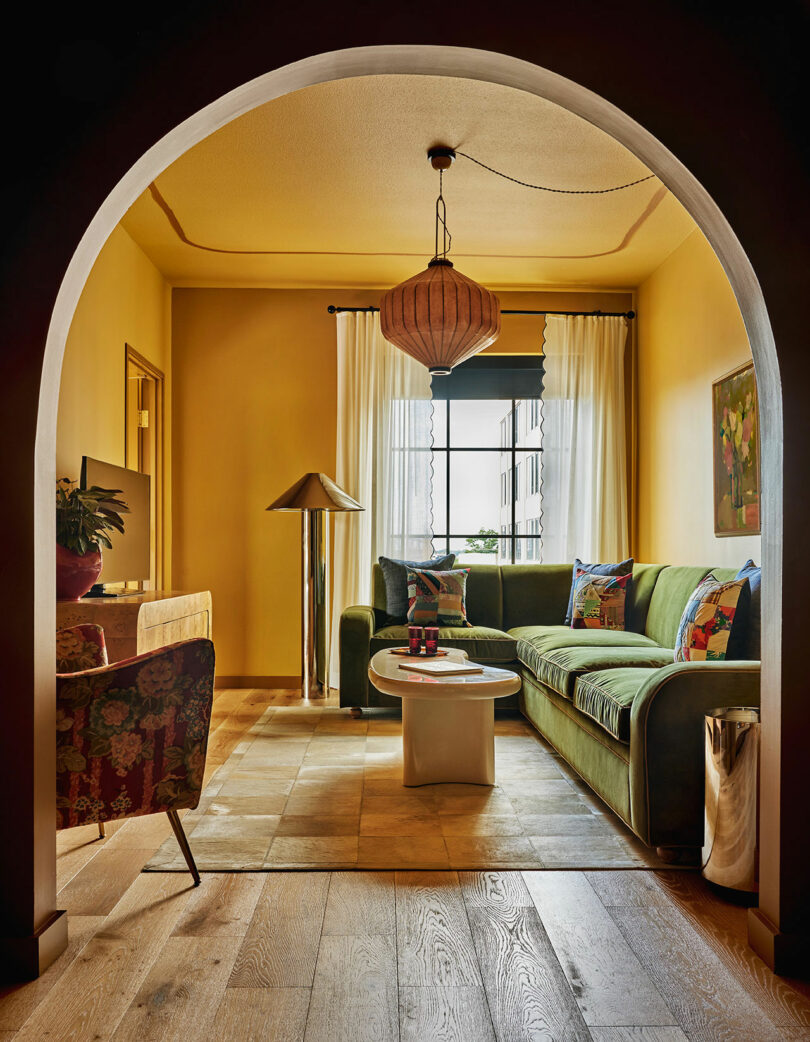
Photo: Jason Varney
Hotel Genevieve Located in the heart of the hip NuLu neighborhood in the booming city of Louisville, this newly built boutique hotel features 122 rooms on six floors, a lobby art gallery that pays homage to the city’s layered history (including a modern take on quilting culture) and includes a curated retail shop. The hotel boasts four distinct culinary spaces: the vibrant and casual Parisian-inspired ground-floor restaurant is full of brasserie details such as cafe curtains and Royer-inspired lighting; a rooftop lounge offers sweeping views of the city and Ohio River, alongside lush greenery, vintage finds, and elevated design touches. Overall, the spaces are feminine and playful to offset the masculinity often associated with bourbon, baseball, and the city’s industrial downtown.
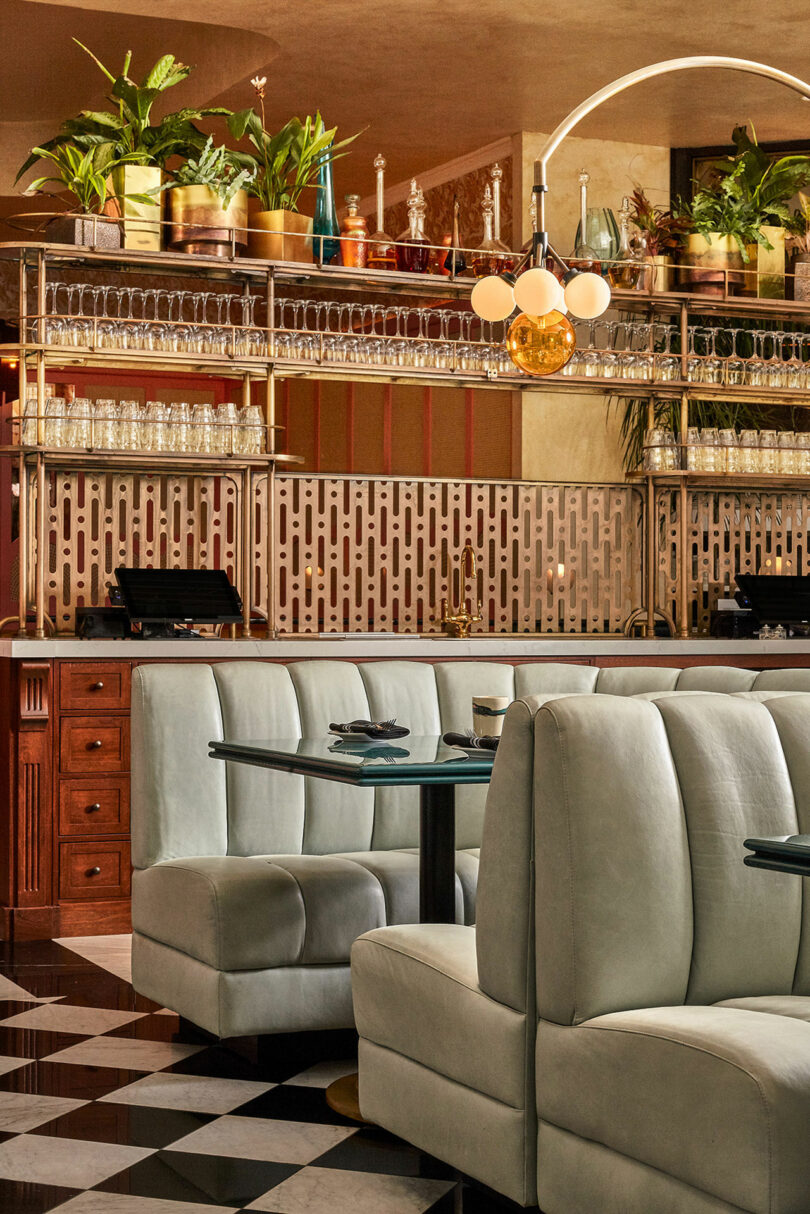
Photo: Heidi’s Bridge
Louie Louie Rohe Creative has renovated a former 3,600 square-foot restaurant space inside the Inn at Penn Hotel on the University of Pennsylvania’s campus to create a bold new restaurant, bar and lounge concept, Louie Louie.
We looked back to the traditions of many classic and timeless European Grand Cafés. We were inspired by the historical significance and ultimate beauty of the Art Nouveau design movement. We designed custom furniture and lighting using traditional details and antique brass metals and offset them with more modern glass globes and forms. We sandwiched the classic checkerboard flooring in the main dining room, with intricately bold and graphic floor patterns. As we worked through the blend of classic European details with bold and bright ideology, we began to realize that we had something special, a design language we call Retro Nouveau.
All of the surrounding millwork and metalwork have been thoughtfully designed to allow each space to function with its unique look and create private areas ideal for more intimate conversations.
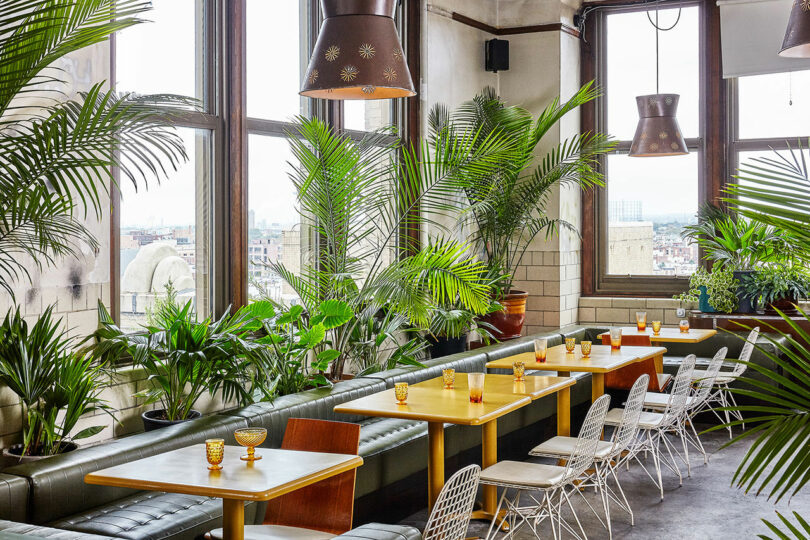
Photo: Heidi’s Bridge
Irwin’s The timeline was tight on this project, but it was such a special building with unique grit and charm that we knew we had to be a part of it! It forced the team and I to be creative and resourceful in ways that we love to be. Set on the 8th floor of the Bok building – a former technical high school turned mixed-use creative development which was designed in the early 20th century by Irwin T. Catharine from whom the restaurant takes its moniker
Converted from the old nursing classroom, the dining room itself is the work of ROHE Creative, the local studio mixing box-tufted banquettes, coppery light fixtures, tulip chairs, and six-foot chandelier with repurposed furniture. The soapstone-topped bar is from the science room, old science lab tables lined with communal benches from the library, and salvaged yearbook photos in the bathrooms. It is quite something!
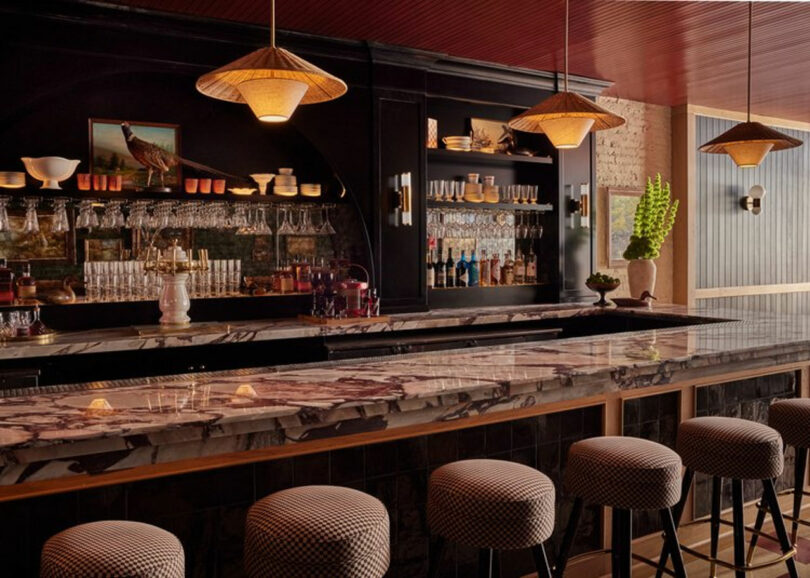
Photo: Jason Varney
Darling Jack’s Tavern Darling Jack’s isn’t your average tavern, although it’s inspired by the comforts of one. Here, the design team played with the idea of a paint-by-number landscape with a single goal in mind; evoking the comforts of a classic tavern in a modern and unique way. Inspired by the colors and textures of landscapes, and the simple joys of being outdoors, the interior palette began to unfold.
Darling Jack’s Tavern has the unique feeling it’s been around for ages, yet it’s visually something new and exciting for the block. As guests enter the space, they make their way through a dramatic entry of red and white velvet drapes and are immediately greeted by a retro radio-turned-host stand, with a red rotary wall-hung telephone beyond.
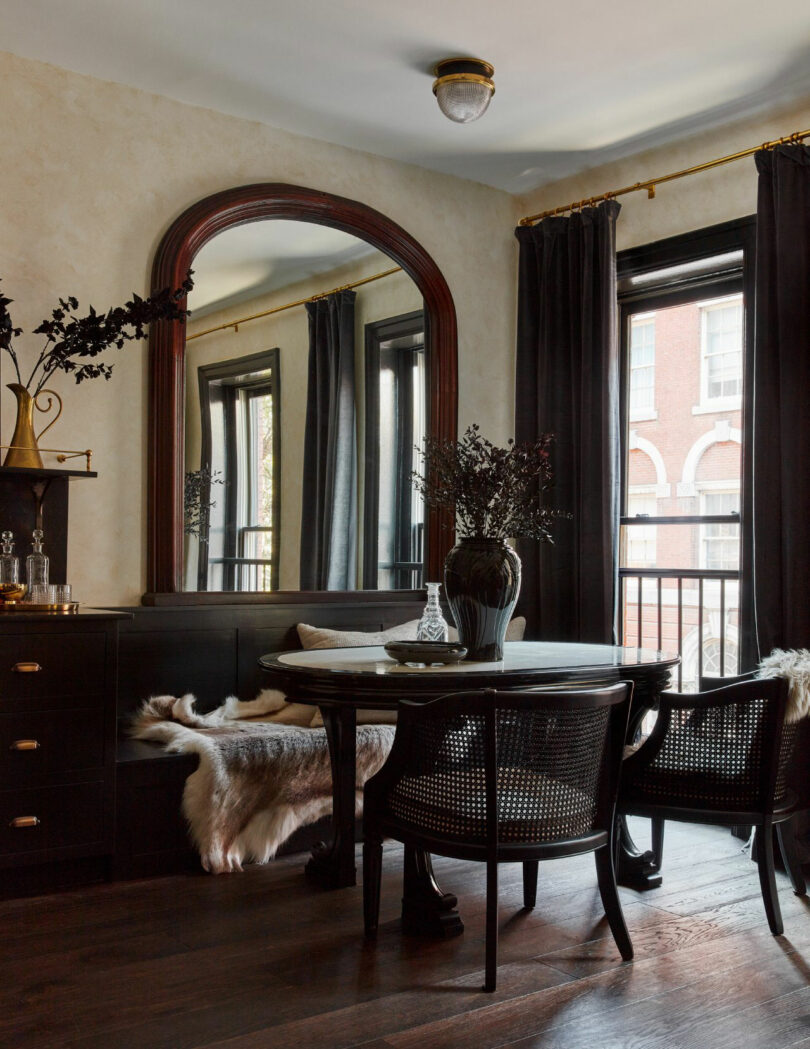
Photo: Jason Varney
Guild House Hotel Guild House Hotel was a once-in-a-lifetime project. A 12-suite boutique hotel in an 1850s Italianate row home, it is also a National Historic Landmark. In 1906, it became home to the New Century Guild, a group of powerhouse women who advocated for the growing female workforce. After researching and selecting the women we felt best represented the guild, we told their stories via subtle design touches – blending history and modernity. It’s eclectic but not messy.
